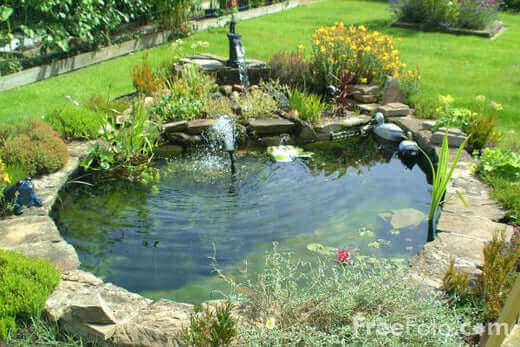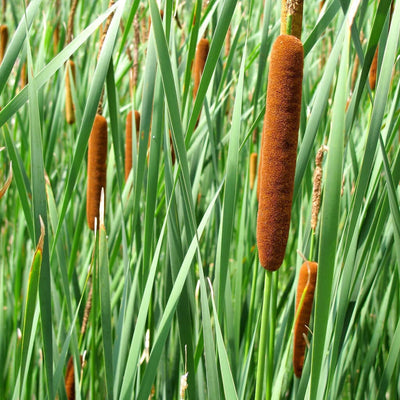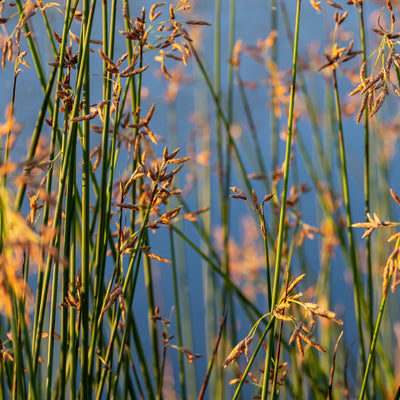Building a Water Garden: A guide on Water Gardening
An amazing garden addition is a water garden. It adds relaxation and brightens up your yard. You do not need a professional and with some time and work you can make a water feature that can be used year-round. This guide will help you make your own water garden by taking you step by step from digging the hole to plant selection. Either a pre–made tub or a vinyl liner stays true to the style of a water garden and even a garden pond. This is a great project you can do by yourself!
Beginning Steps to a Water Garden:
Any water garden can be built in just a few easy steps. The first step is choosing your container. You will want to choose between a UHD pool and a flexible pond liner. A pre-made tub is a great option for someone who would like to have a simple and easy set up. If you would like to have more of a custom water garden a pond liner is the better option.
Digging the Hole
First, start to dig the hole as big as the shape and size of the pool you have. If you have a preformed pool, make sure the hole is an extra two inches wider and deeper. If you have a flexible pool liner, you can make all sorts of different shapes and depths. You can even leave some space around the edges of the hole to plant some decorations like flowers or other plants.
Preparing the Hole
After you finish digging a hole, put in a bottom layer of wet sand. This will make sure the pool or liner is put down on an even and smooth surface. Wet sand acts as a cushion to help protect the bottom of the pool or liner from getting scratches on it from dirt, roots, or rocks.
Installing the Pool or Liner
If you have a preformed pool, put it in the hole and make sure it's level. If you have a flexible liner, put it in the hole and make sure it fits the shape you want. To keep the liner from floating, fill the pond with a little bit of water. You can also put rocks around the edges to hold it in place.
Finishing Touches Including Rocks
After putting in a water source, you can finish it off with rocks. This keeps the lining in place and makes it look nice in the garden. Cut the extra lining and fill the pond with water and make sure it's at the right level.
Selecting the Correct Water Plants for Your Water Garden
A water garden cannot be completed without the right plant to make it welcoming. Water life attracted to the pond is vital for looks and health. Here is a list with the top water garden plants that do well in these gardens:
Coontail
This plant floats and offers a lot of coverage for the pond. Its growth rate is fast, and therefore an optimal choice for its natural look. It also stops algae growth that can be harmful to the pond by preventing sunlight and oxygenating the water.
Water Lily
This plant is popular for its beauty. Water lilies can be white, pink, and yellow, and offer a nice view of the water. It also provides shade for pond life and is a good algae reducer.
Cattails
Cattails, with their rustic charm, are tall, stalk-like vegetation that line pond edges and are good for serene, water-centric gardens. They are also great because they filter water and help your pond’s ecosystem.
Soft Stem Bulrush
Another plant perfect for the edges of your water garden is soft stem bulrush. It grows tall with feathery stems, and is easy and pleasing to the eye. This plant also provides shelter for water animals.
Red Cardinal Flower
This flower prospers on the edges of a water feature and is attention grabbing because of its tall, red, and colorful blooms. It flourishes in moist soil, adding even more charm to your water feature.
Jewelweed
Jewelweed is great for shady ponds and also helps control pond edge erosion. It attracts many pollinators and is known for its beautiful orange and yellow flowers that also attract hummingbirds.
Conclusion: Start Your Water Garden Today
Water gardens take careful planning, but in the end, it is well worth the effort. Picking out a prefabricated pool is the easiest option, but a flexible liner adds more customization. Make sure to plant and maintain your pond. Water lilies, cattails, and coontail are great plants that are wonderful to look at and helpful to an ecosystem. For the best selection of plants and gardening equipment, visit TN Nursery. TN Nursery is your most trusted online gardening supplier.
FAQs
What is the rule of 3 in gardening?
This principle often applies to elements like color combinations in a garden. Garden layout also applies to the Rule of 3. In a garden, you have balance and harmony with three plants that vary in size, texture, and color. If you have a water garden, you can also apply the rule by using plants of different heights, colors, and types. This gives an appealing look to the pond and makes it cohesive.
Can you grow plants in water permanently?
The answer is yes. Some plants that can grow in water permanently are soft stem bulrush, cattails and water lilies. These plants can live in water gardens, ponds and other places where the roots are under water. These plants are a great addition to a water garden. They help and beautify the water by adding oxygen and supporting wildlife.
Do I need permission to build a pond in my garden?
Most of the time, there isn't a need to have real permission to put in a small pond in your yard. Yet, it's still very important to confirm with your local constable or zoning office to figure out if there's any restrictions or permits needed for your location. Some places have specific rules pertaining to the size, location, or depth of your pond, especially if it's close to any natural water sources or wetlands.
Are water gardens expensive to build?
Water gardens can be inexpensive or very costly, depending on what materials you want to use and the type of design you wish to have. If you want to have a simple water garden with a pre-built pool, and a few plants, it can be very low-cost. At the same time, if you wish to have a more complex design with a custom designed pond, a pump, a filtration system, and a more diverse variety of plants, it can become more expensive. Overall, you end up spending money on a water garden, but it is an investment for the beauty and calmness of your garden.
What is the 70/30 rule in gardening?
In gardening, the 70/30 rule means that 70 percent of the garden should have the main design features, which can include plants, pathways, and buildings; and the other 30 percent should be mostly empty space that can have other decoration features such as fountains and places to sit. That way, the garden can be balanced and have plenty of space without too many things going on.
What is the most common mistake of first-time gardeners?
First-time gardeners most often overwater their plants. Many beginners think their plants need to be watered as much as possible, which can cause watering problems and unhealthy roots. It's important to understand how much watering needs to be done for each specific plant, and to know the soy needs to be checked. Also, problematic garden layouts and choosing plants that don't go together is bad for first-time gardeners as well.





